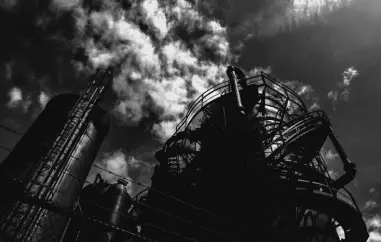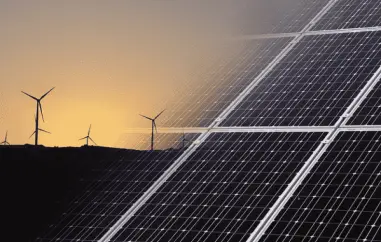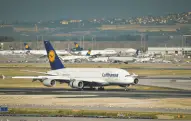Gas storage facilities are three-quarters full - experts warn against euphoria
 For weeks now, Russia has been supplying significantly less gas to Germany, and concerns are growing about an energy shortage in the coming heating season.But now there is first of all news that gives hope: Regardless of the restricted Russian supplies, the German gas storage facilities are again more than 75 percent full. According to the latest, still preliminary data from the European gas storage operators on Saturday evening, the fill level on Friday morning was 75.43 percent.
For weeks now, Russia has been supplying significantly less gas to Germany, and concerns are growing about an energy shortage in the coming heating season.But now there is first of all news that gives hope: Regardless of the restricted Russian supplies, the German gas storage facilities are again more than 75 percent full. According to the latest, still preliminary data from the European gas storage operators on Saturday evening, the fill level on Friday morning was 75.43 percent.
The first stage target for storage filling was thus reached a good two weeks ahead of schedule, thanks mainly to lower consumption in the summer and strong imports from northwestern Europe. A storage level of at least three quarters was actually not the plan until the September 1 deadline, according to a regulation issued by the Federal Ministry of Economics.
The head of the network agency, Klaus Müller, was correspondingly satisfied and initially relieved. "We have achieved the first interim goal ahead of schedule. That is gratifying," Müller said. But the next goals are ambitious, he added. "Now it is important not to slack off in filling the storage facilities. The gas that flows into the storage facilities now can help us in the winter."
Currently, Russia continues to pump gas to Germany, but the Nord Stream 1 Baltic Sea pipeline, which is important for this purpose, has only been operating at about 20 percent capacity for a good two weeks. Technical reasons are responsible for this, says the Russian gas company. The German side, however, considers this to be a pretext.
The German government is taking various measures to ensure that gas storage facilities in Germany are almost full at the start of the heating season. Germany should thus be better prepared in winter against a possible total loss of Russian supplies.Following the milestones for September and October, when the target is 85 percent full, the plan is to have the gas storage facilities at least 95 percent full by November 1. The storage facilities compensate for fluctuations in gas consumption and thus form a kind of buffer system for the gas market. The volume of gas stored at a fill level of 95 percent is roughly equivalent to nationwide consumption in January and February 2022.
Despite reaching 75 percent ahead of schedule, however, experts see no reason for euphoria. The managing director of the storage association Ines, Sebastian Bleschke, spoke of a "good perspective". But the 75 percent is just an interim goal, he said. "In essence, it's about reaching 95 percent on Nov. 1," he told Germany Press Agency. With normal temperatures in October, he said, the start of the heating season will have a major impact on storage possibilities. Because of the greatly reduced gas imports, it is therefore possible that the target for the fill level will be missed, he said.
With normal temperatures and reduced gas supplies via Nord Stream 1, the stored gas could be used up as early as March or April, Bleschke warned. "If Russia stops gas deliveries altogether, sooner." However, it could become too tight even before March. "Because it can happen that on particularly cold days the gas withdrawal from the network is so high that the simultaneous gas injections are not sufficient to meet demand," Bleschke said. Then, he said, demand has to be reduced, even though gas is still stored in the reservoirs.
Faced with energy shortages and rising prices, German Chancellor Olaf Scholz (SPD) and Economics Minister Robert Habeck (Greens) over the weekend invoked social cohesion. "We are facing a national show of strength," Habeck stressed. And Scholz said, "The situation in the fall and winter will be difficult." But the country is prepared, he said. "If we stick together, we will manage," the chancellor said.
"Every contribution counts," Habeck said. He added that the German government was consistently pursuing its policy of becoming independent of Russian energy supplies. "But it is also very important to save significantly more gas: in public administration, in companies, in as many private households as possible," the minister stressed.
Habeck is already planning savings measures for this heating season. For example, offices in public properties are to be heated only to 19 degrees, with the exception of clinics, care facilities and other social institutions. In addition, monuments and government billboards are no longer to be illuminated at night. A corresponding ordinance valid for six months is to be passed directly by the federal cabinet without the involvement of the Bundestag or Bundesrat and come into force on September 1.
For millions of gas customers in Germany, Monday is a day of truth. That's when the amount of the gas levy to bail out systemically important gas importers is to be announced. Consumers must expect considerable additional costs.Meanwhile, German Interior Minister Nancy Faeser (SPD) warned against attacks on energy infrastructure in Germany. "We must be prepared against possible attacks on gas terminals and other critical infrastructure," she told Bild am Sonntag. She referred, for example, to protection against cyberattacks against the backdrop of Russia's war of aggression against Ukraine. But there are also new tasks, she said: "For example, we have to control the movements of Russian ships in the North Sea and Baltic Sea and guard the new liquefied gas terminals."
In addition to the Russian threat, it is also about fighting extremism with all your might, said Fasser. "We are alarmed by the attempt by left-wing extremists to exploit climate protests. We take that very seriously. On the other hand, of course, we continue to see the danger from the right."Representatives of security authorities had repeatedly expressed concern that extremists could try to exploit protests for their own purposes, such as Reichsbürger in the corona pandemic. Brandenburg's head of the Office for the Protection of the Constitution, Jörg Müller, warned that extremists could take advantage of the energy crisis and high inflation.
Photo by Frantzou Fleurine










































